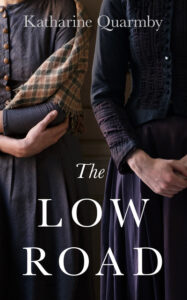
Raising the Dead from Paper: Katharine Quarmby on Fiction's Friendly Ghosts
"Remembering is both an act of restitution and of defiance."
It was 1999 and I was a producer for the BBC, sent on assignment back to Rwanda to make two films for the current affairs program, Newsnight, about the aftermath of the genocide which had left upwards of 800,000 killed. Our research had taken us to cover the horrific massacre of 25 children at the Benebikira convent in the town of Butare in south-east Rwanda and the alleged involvement of a colonel, Tharcisse Muvunyi, who was at that time resident in London.
We had been introduced to the mother of two of the children murdered, and she had agreed to an interview. I was both producer and translator, so would translate her answers for the reporter and by the end of the interview we were all aghast and wrung out.
We were just packing up the camera equipment and taking the lights down. On an impulse, as I was still sitting with the interviewee, I asked her what her boys had been like. Her face came alive and she answered and painted the most beautiful picture of her sons.
Then she stood up and walked towards a pinboard of photos and showed us pictures of her boys, doing the things they loved doing. Playing football, reading. A normal, happy life, printed out and captured, before the genocide swept up her family in a terrible conflagration. Her fingers dwelled on their photographs and I remember thinking that if only love could raise the dead, it would; should.
Each ordinary life can and should be celebrated, but so many lives are forgotten, and leave few marks behind them.
Voices and lives can be lost so easily, especially those deemed not important, or not significant historically. Each ordinary life can and should be celebrated, but so many lives are forgotten, and leave few marks behind them.
Remembering is both an act of restitution and of defiance—and some of that thinking permeates The Low Road. I wanted to perform an act of magic, and raise lost voices from paper, or rather let those voices speak for themselves for the first time.
The search for the story that became The Low Road started seven years ago, when, searching for new family walks, I came across a description of one local area in my Norfolk, England, hometown. It was a snippet, really, and it mentioned in passing whilst describing a boggy area at the end of the town called Lush Bush, that a local woman, Mary Tyrell, had been buried on the parish boundary there in 1813. She had taken poison and died after being investigated for infanticide. She was staked through the heart after death in an archaic punishment called felo de se. A daughter, then only described by her initials, A.T., had survived and had been sent to a refuge in London.
There’s this shiver I get, as a journalist, when I come across a story. A story I want to make my own in some way, which sounds somewhat ignoble, but this impulse to plant a flag on a story, as we call it, is there in so many reporters. So that’s how it started, with a sense of something I wanted to dig into but there was something deeper and more personal—the sense of an identification, of a haunting. As I dug deeper, into the story of this poor grieving child, orphaned in the most terrible way, I started to feel that I had to tell her story—that in some way I was meant to tell her story. Here was a friendly ghost who wanted to speak, and so I’ve given her my best shot.
I started with taking a guess that her first name was Ann and I was right—I found an Ann Tyrrell, (called Hannah in my novel) who had lived at Refuge for the Destitute in Hackney, East London. Whilst I wasn’t orphaned, I had been adopted at birth and so was what we call in the UK “care experienced”—and like Ann, took to “pilfering” in my home town of Harleston when we moved there when I was seven. Rather sadly, it was an attempt on my part to make friends in a new school. When Ann’s pilfering came to light, four years after her mother had died, a collection was taken up amongst the townspeople of Harleston and she was sent to an orphanage in London.
Ann was sent to the so-called Refuge for the Destitute in Hackney, in East London. I found her in the Hackney Archives in the CLR James Library, in the great Minute Books that noted in copperplate writing the history of the Refuge and of the young people, known as Objects, who lived there.
The Refuge is a bike or bus ride away from my house and near where my children went to school. I walked up and down the Hackney Road on the search for it and found the rough location of the institution where she had been admitted, in a derelict area between dark alleys. Ann had been arrived here, banished from the hometown we shared and being found to have understood by the Refuge’s Committee that her mother had committed an “Iniquity.” Thus she was admitted.
Things got better for a while. She met another destitute, Annie Simpkins. The girls forged a friendship that deepened into love and in December 1821 they committed a desperate act, as I learned playing hide and seek with them through different archives.
I traced Ann on, through the archives to the National Archives at Kew, West London, and also to the Old Bailey Online Proceedings, which have been digitized and provide a unique insight into the British criminal justice system.
That winter evening in 1821 the girls ran away with stolen goods from the Refuge—perhaps to make a life for themselves, who knows—and were apprehended by the Superintendent of the Refuge, standing trial for “grand larceny,” or thieving, on January 10, 1822. They were sentenced to seven years’ transportation.
But as I found, when I visited the National Archives, they didn’t go immediately. It was six years later when our Ann was transported. So what happened in between? I kept looking.
First of all, they were sent to a female prison, the Millbank Penitentiary, now buried underneath the Tate Britain gallery. A stone buttress by the Thames nearby states: “Near this site stood Millbank Prison which was opened in 1816 and closed in 1880. This buttress stood at the head of the river steps from which until 1867, prisoners sentenced to transportation embarked on their journey to Australia.”
There are few other traces, but there was a time when a regular sight would have been that of men and women walking chained down the river steps and onto longboats to be rowed to ships which would take them on their final journey along the river Thames and from there to Australia.
Here was a friendly ghost who wanted to speak, and so I’ve given her my best shot.
Before that, though, the girls were taken from the Penitentiary and put on a prison ship on the Thames, some of the few females ever to be held on what were called hulks, immortalized by the writer, Charles Dickens in his opening of his novel, Great Expectations, where an escaped convict, Magwitch, collars the child protagonist, Pip, on the marshes near Woolwich.
So what of our girls? When I visited the National Archives at Kew I came across an extraordinary document about their lives on the hulk. There’s something ritualistic about going to archives—the shedding of belongings into a locker, the relinquishment of pens, and the taking up of a pencil before entering the rooms to order documents. I was handed a document, done up with red ribbon. Had anyone else ever untied this, I wondered? The knot was neat; the paper clean. I pulled on the knot and unfolded the document. There were the names of my girls and others, resident on the prison ship on the Thames—and there was a signature at the bottom from the then Home Secretary, Robert Peel, pardoning them. In 1825 the girls were set free and ended up working at the Ship Inn in Millbank, near the Houses of Parliament. That didn’t end well either.
The last traces of my Ann were back in the Hackney Archives. She had asked for money so she could return to Harleston, but found that all her friends were dead; she had been granted a stay in the temporary part of the Refuge…and then she vanished. All I knew was that the Superintendent of the Refuge had written back to a lawyer in my hometown to let him know that Ann had been transported to “Botany Bay” in 1828.
Armed with these bookends—of how Ann’s story started and how she was exiled from her home country, I then had to make a leap into fiction because at this point, all traces of her vanished. I could find no record of her in Australia, and it was at this point that the dead end I had reached forced me into a pivot. I could write the girls’ story, in a fashion, if I novelized what happened to them in Australia, taking as my guide the history of other girls and women who were exiled. And so it was that my girls became part of our colonial history—transportation to mainland Australia and Tasmania—the largest forced migration of English, Scots, Welsh and Irish people, numbering some 162,000 between 1767-1868
From a trace of a story, then, The Low Road became a novel that uncovered lost histories: the stories of poor women from rural areas, the stories of convicts sent to penal colonies because of poverty and political activism, the stories of people who often left no records behind as a result of illiteracy and hardship and the largely overlooked history of same sex relationships between convict women. This was a story from the bottom up, of how three generations of girls and women from one family were caught up in political times, from the fall-out of the Napoleonic wars and the poverty after, to the rise of the agricultural workers, the Swing Rioters, and other political dissidents and beyond the seas to Australia.
In the poem “Whispers of Immortality,” TS Eliot remembers the Jacobean playwright John Webster as being “much possessed by death, and saw the skull beneath the skin.” In The Low Road, the task was different. I had found the bones all right, but I wanted to put the flesh back on.
In truth, we don’t get to raise the dead in life. We can, however, do them a retrospective justice. It’s not possible to set right what happened to Mary and Ann—all we can do is hear their voices. When I go back to Harleston to visit my family we go on a walk that takes us through the town, past the inn where a jury of men held an inquest on Mary’s body, past the green where the pond used to be where the baby was found, and all the way down to Lush Bush, where Mary is buried in an unmarked grave. I think of Mary and Ann every time, and I hope I’ve told their story well enough. That I’ve done their story justice, at least, in The Low Road.
__________________________________

The Low Road by Katharine Quarmby is available from Unbound.
Katharine Quarmby
Katharine Quarmby has written non-fiction, short stories and books for children. This is her first novel. Her non-fiction works include Scapegoat: Why We Are Failing Disabled People and No Place to Call Home: Inside The Real Lives Of Gypsies And Travellers. Katharine also works as an investigative journalist and editor, with particular interests in disability, the environment, race and ethnicity and the care system.



















